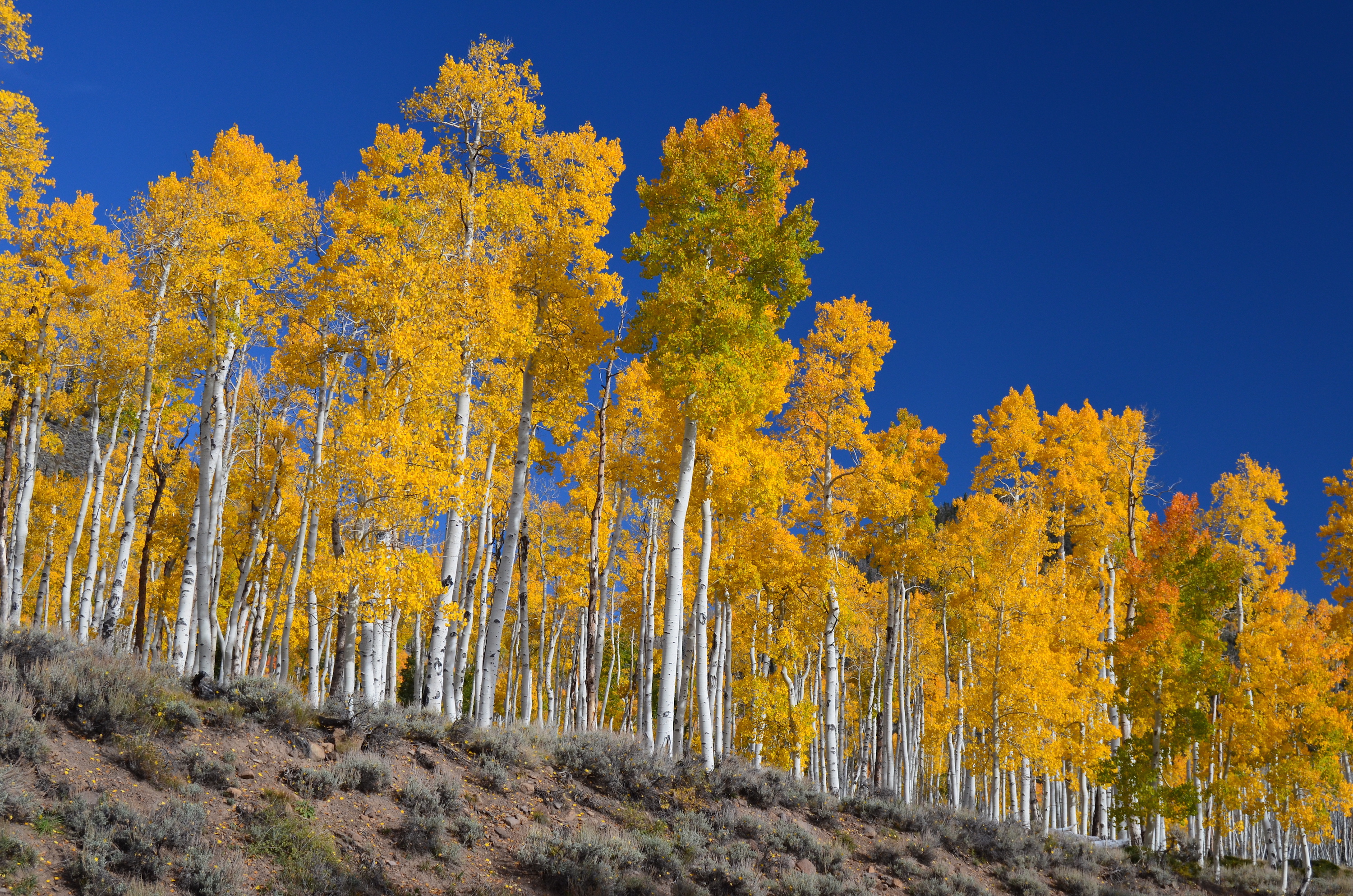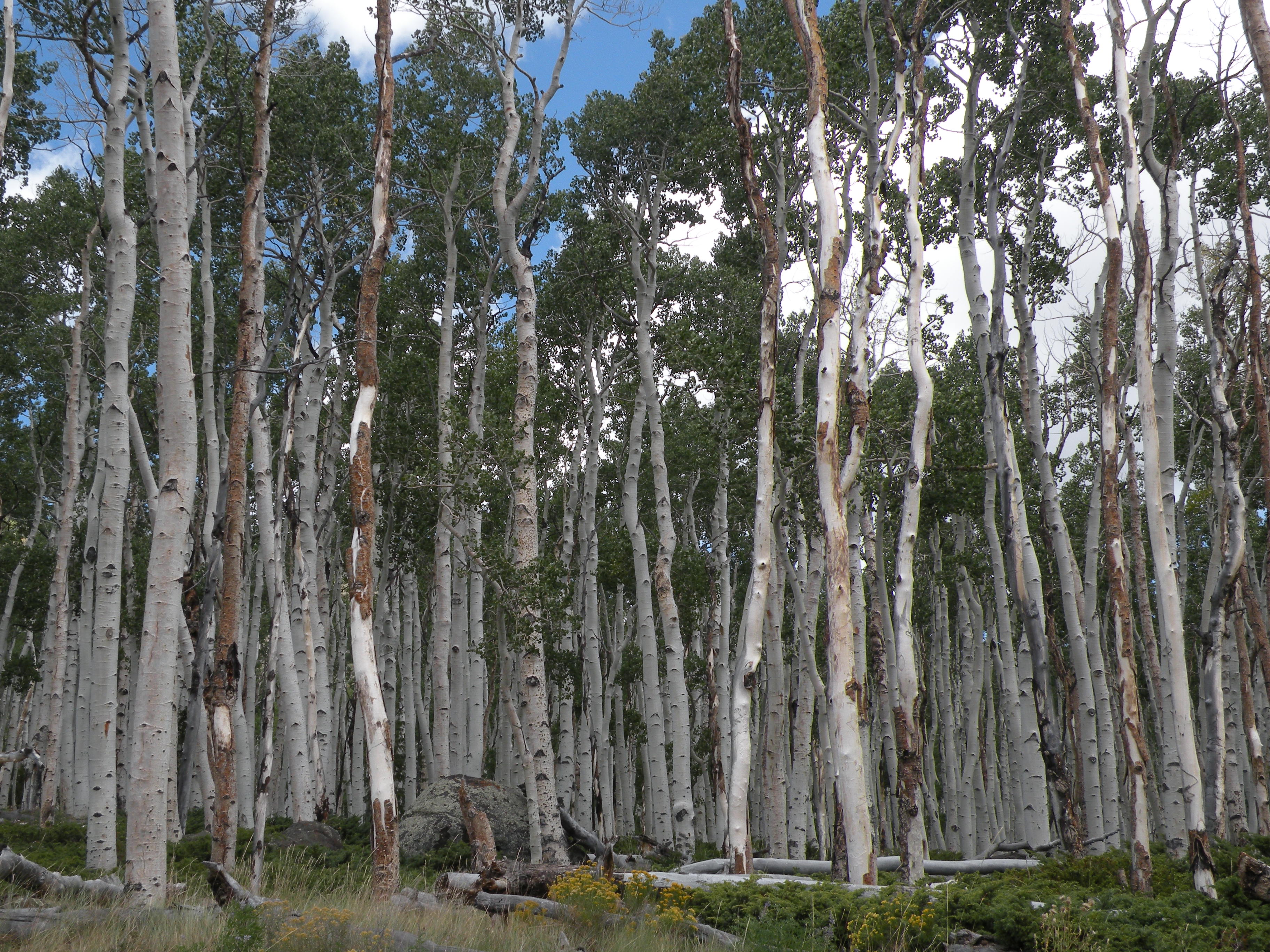Pando, One Of Earth’s Largest Living Organisms
These quaking aspens are all clones of one mother stem.

Pando in the fall. Photo by John Zapell/USDA Forest Service, Fishlake National Forest
Stretching across more than 100 acres of land in the Fishlake National Forest in Utah is what is considered one of the largest (by area) and most massive living organisms on earth—a vast group of quaking aspens dubbed “Pando,” which is Latin for “I spread.” Though the patchy forest looks like it consists of different trees, the tall trunks are actually all genetic clones, according to Jennifer DeWoody, a geneticist for the USDA Forest Service.
The quaking aspen (Populus tremuloides) is the most widely distributed tree in North America, reaching coast-to-coast from eastern Canada to California, says DeWoody. Aspens grow in groups called stands, and within these stands, a single tree will spread by sprouting new stems from its roots, often several feet from the original trunk.
“Those trees remain connected for a good long while,” DeWoody says. “This long process is over many years—suckers [or stems] coming up over a larger and larger area.” In the past, scientists dug up patches of aspens to prove that the trees were all connected. Their stems can share the products of photosynthesis, food, and possibly disease as well.

Pando is unique because its stand is so massive, compared to most aspen stands; University of Colorado scientists estimated in 1976 that it contained around 47,000 stems. Those scientists were also the first to describe Pando as a clone, based off of morphologic and aerial photographic analysis. But it wasn’t until 2008, when DeWoody and researchers from Utah State University collected leaf and bark samples from the trees and analyzed their DNA that it was confirmed that Pando indeed was a single genetic individual.
There are conflicting estimates that Pando’s genetic makeup could be anywhere from 80,000 to one million years old—“that’s a very hard thing to measure,” DeWoody says. But based on analyses of how long it takes aspens to grow and to sprout, scientists agree Pando is very, very old, if not one of earth’s most ancient organisms.
Because individual aspen stems generally live about 100-150 years, the origin mother stem is likely dead, says DeWoody. “The only way the whole clone survives is to send up new suckers,” she says. While other trees can also clone in this way, “[aspens] do it the most broadly across so many different environments.”
Aspens in the West haven’t been growing very much in recent years, however, according to DeWoody. “These little aspen sucklings are really tasty to things like elk and deer,” she says, and in the case of Pando, “for a long time, there were no new stems coming up because they were being grazed really heavily.” Foresters have been putting up fences to keep the animals out, and have also been cutting some trees to stimulate new growth.
The best time to see Pando, DeWoody says, is when summer shifts into fall. “Aspens are really great because they’re one of the first things to turn color.” The quaking aspens—also known as trembling aspens because their leaves catch the breeze in such a way that makes the trees look like they’re shaking—turn a brilliant gold in the fall. In the West especially, it’s one of the only trees that changes color like that, says DeWoody.
“It’s a great example of some of the wonders that are out on your national lands, your public lands,” DeWoody says. “So go visit your national forests!”
Chau Tu is an associate editor at Slate Plus. She was formerly Science Friday’s story producer/reporter.